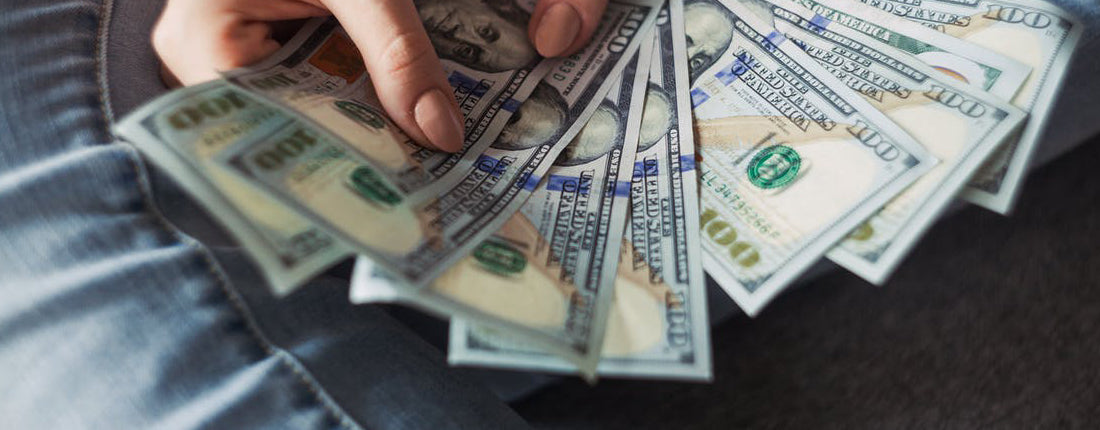Which one is right for your business?
Today, counterfeiting has become much more sophisticated obligating nations around the globe to add design elements and incorporate new materials into their banknotes to deter counterfeiters.
Training yourself or an employee to spot a counterfeit is time-consuming and can easily lead to human error. Detecting counterfeit currency is not easy or accurate when relying on counterfeit pens as they are not effective on “bleached bills”, they get lost, and tend to dry up. Click here to learn why counterfeit pens are not reliable.
With the use of cash still prevalent, businesses across all industries are at risk of being targeted and disrupted by counterfeiters. Whether you own a small coffee shop, retail store, or Cannabis Dispensary - your operation relies on an unspoken trust from customers who bring in their cash. #BecauseYourMoneyCounts, taking action to protect it and your business is made simple with our line of counterfeit detectors and validators.

Counterfeit Detector vs. Counterfeit Validator
While the ultimate goal in using these counterfeit money scanners is to prevent the acceptance of fake bills, these two types of detectors have different advantages depending on the operator. Some may assume the automatic option is most suitable for them, but this depends on the needs of your business and budget. You see, the automatic counterfeit detectors only work with pre-programmed currencies and cannot validate the authenticity of documents. On the other hand, the manual validator can read virtually all currencies while providing the tools to detect counterfeits and other documents like passports, credit cards, and identification cards.
What are the differences between Counterfeit Validators and Counterfeit Detectors?
1. Training:
Counterfeit validators are manual detectors that help users check each bill's physical characteristics against real currency guidelines. It is recommended for the user to familiarize themselves with the security features of their currency, passport, ID, or documents that have security features.
Meanwhile, an automatic counterfeit detector does not require training thanks to its out-of-the-box functionality. As soon as the counterfeit detector is turned on, it scans bills in under a second and automatically lets the user know if the banknote is suspicious or not.
2. Price Point:
The automatic counterfeit detectors are highly sophisticated. They are designed to check the bill for magnetic ink, authenticity of the paper, correct positioning of unique denomination-specific infrared patterns, security strips, reflection of the ink, and overall design all in a fraction of a second. Counterfeit detectors combine all these data points to quickly provide the user with a genuine or suspicious verdict.
On the other hand, counterfeit validators do not include scanning technology. Instead, they provide the operator with the tools like a magnetic head, magnifier, and Super-Bright LEDs to determine whether bills are real or fake. This makes the manual validators typically less costly than automatic detectors.
3. Currencies:
With 180 different currencies used in 193 countries, the manual counterfeit validator can be used on virtually any international currency with security features. Thanks to the large banknote verification window, our manual validators can allow for any-sized bill* to be analyzed by the user.
* Our largest verification window is 6.69 x 5.11 in (17 x 13 cm)
On the other hand, our automatic counterfeit detectors can have anywhere between 1 and 3 pre-programmed currencies. Most come pre-programmed with USD, while some more sophisticated models like our D585 come with three pre-programmed currencies: USD, EUR, and GBP.
4. Counterfeit Detection Methods:
Our automatic detectors come equipped with up to 8 possible counterfeit detection methods which all scan in under a second to protect you from accepting fake money. Our most sophisticated model, the D700 has all 8 counterfeit detection methods: UV, WM, MG, MT, IR, DD, IMG, and CS. However, most counterfeit bills do not require so many detection methods to get flagged by our machines. Fortunately, we have many detector options available depending on your exposure to fake bills and your historical losses associated with counterfeits.
Different from our detectors, our validators come with an integrated ruler (DD), White LEDs (WM), Super-Bright UV LEDs (UV), and a magnetic head (MG & MT). Some more sophisticated models, like the LED440, come with the ability to see micro-printing (MP) and infrared (IR) features. This allows our manual validators to be used with virtually all currencies and documents that have security features.
5. Portability:
While all our units are built with robust bodies and have a 3-Year Hassle Free Warranty*, not all are meant to travel. Some of our automatic counterfeit detectors come with batteries included or have the option to add a battery. Our D470, D585, and D700 are all portable machines with rechargeable batteries that last between 16 and 20 hours on a single charge.
*Terms and conditions apply
On the other hand, our manual validators do not come with options for portability. The Super-Bright UV LEDs and White LEDs require a connection to an outlet. However, they all come with standby (sleep) mode to help save you money on electricity when the unit is not in use.
What should you consider when buying a Counterfeit Detector or Counterfeit Validator?
- What currencies does your business take?
- What level of expertise do you have in identifying counterfeit bills?
- Do you need to validate documents like passports and IDs?
Read more about things to consider here
Let us guide you! Chat with our customer service team Monday-Friday from 9:00 am to 5:00 pm ET.

